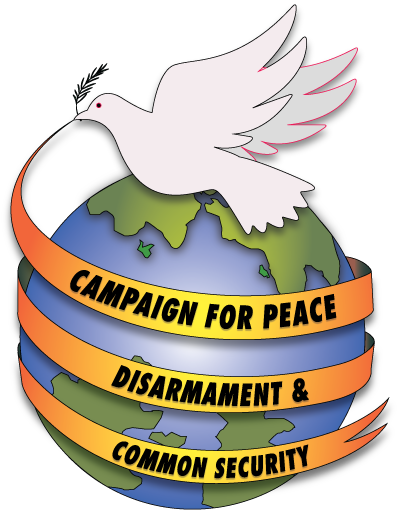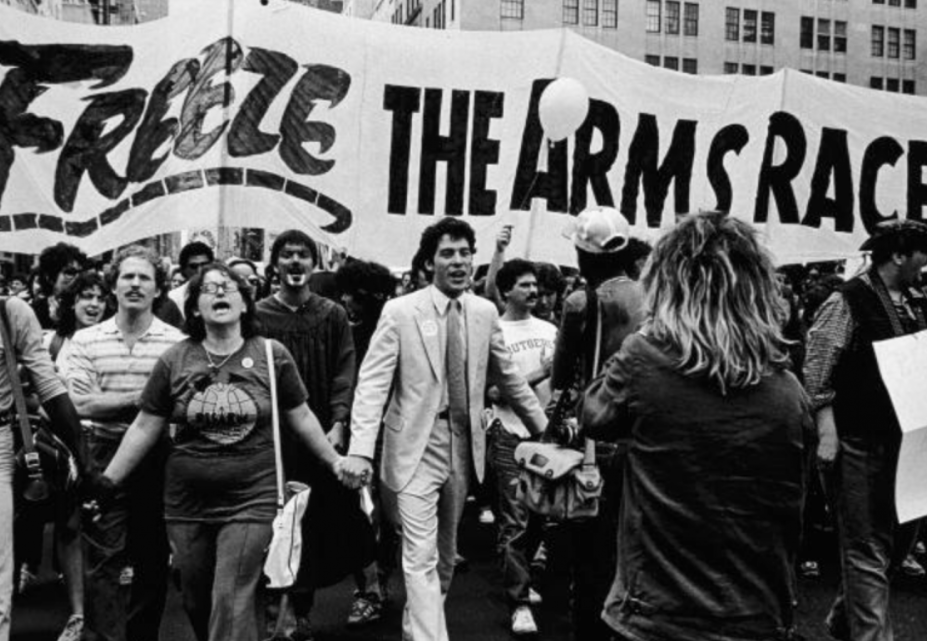By Jerald Ross
Conference organizer and speaker Joseph Gerson, Campaign for Peace, Disarmament & Common Security.
It is often stated – incorrectly – that the Chinese character for “crisis” includes the symbols for both “danger” and “opportunity.” While that may not be literally correct, the character does mean “a pivotal moment when things happen or change.” The world is at such a juncture with nuclear weapons. We may soon answer the oft-posed question of whether we will abolish nuclear weapons or they will abolish us.
The takeaway from two recent conferences on nuclear weapons I attended in New York City (May 4 & 5, 2019) suggest one or the other possibilities will come to be.
At the conference “Growing Risks in a Changing World” several presenters described the multipolar nature of this post-Cold-War world and the countless flashpoints it contains for small and great power conflict. Joseph Gerson from the Campaign for Peace, Disarmament & Common Security likened the current situation to the pre-WWI state of disorder. Combine that with the classic Thucydides Trap, or tensions between rising and fading world powers, and the risks are enormous for a “war no one wants.” But as horrible as the “industrialized armaments” of World War I proved to be, today we have within our arsenals the capacity to literally destroy life on this planet.

Daniel Ellsberg speaks via video link at the “Growing Nuclear Risks” conference in New York City, May 4, 2019.
Keynote speaker Daniel Ellsberg (appearing by Internet) lamented the continuing existence of the “doomsday machine” he regrettably helped create as a young nuclear war planner. He described how unimaginably destructive arsenals could be unleashed at a moment’s notice as a result of miscalculation, error, or irrational intent. Thanks to the Trump administration’s withdrawal from international agreements like the INF (Intermediate-range Nuclear Forces) Treaty and the Iran Nuclear Deal, chest thumping between India and Pakistan, and our continuing inability to negotiate a way out of a nuclear Korean peninsula, the Dr. Stangelove insanity of the cold war seems to be re-emerging. But it is re-emerging with new levels of “locked and loaded” nuclear arsenals, and the likely intent to build more. Clearly, we are at a desperate moment.
Also presenting at the conference were speakers from Black Lives Matter (Karlene Griffiths-Sekou) and U.S. Labor Against War (Reece Chenault) pointing out how the massive amount of dollars being soaked up by weapons production is robbing our society of the resources needed to address other urgent needs, and how the political process often seems to pit groups against each other rather than uniting us in common cause. The same message came from international speakers present, including two Russian guests, who reflected on the toll militarism and the preparations for war—and especially the construction of nuclear weapons—are taking on all our societies. We are inextricably in this together.
The next day I attended the annual meeting of Abolition 2000, the worldwide network of organizations and individuals working toward nuclear disarmament. Consisting of over 2000 organizations and hundreds of thousands of individuals across the globe, this network represents a powerful assembly of civil society demanding an end to the madness of nuclear proliferation. Large and small groups, learned professionals and grassroots organizers, young people enraged about this threat to their future, and thousands of Hibakusha (atom bomb survivors) desperately urging us not to forget about our past, are all linked by the common purpose of ridding the world of these evil devices.
We heard about the status of the UN Treaty on the Prohibition of Nuclear Weapons (TPNW), approved in 2017 by 122 nations in the UN General Assembly, which representatives from the International Committee on the Abolition of Nuclear Weapons (ICAN) predicted will enter into force next year. We heard from a representative of Gensuikyo (the Japan Council Against Atomic & Hydrogen Bombs) that they may bring their World Conference (held annually since 1955) to New York next year, in recognition of the 75th anniversary of the American atomic bombings of Japan, so as to be present when the Hibakusha present the 100 million signatures they have gathered to demand an end to nuclear weapons. We heard of initiatives like “Don’t Bank on the Bomb” calling on governments to divest from nuclear weapons manufacturers and the “Back from the Brink Campaign,” resolutions being adopted in towns and state legislatures all around the U.S., and some around the world, calling on the U.S. to take specific steps to unwind this “terrible spring” that could at any moment snap and unleash Armageddon.
Back from the Brink specifically calls on the U.S. to:
- Renounce the first use of nuclear weapons
- End unchecked authority of the U.S. president to launch a nuclear attack
- Take U.S. nuclear weapons off hair-trigger alert
- Cancel the $1.7 trillion plan to upgrade the U.S. nuclear arsenal
- Actively pursue a verifiable agreement among nuclear-armed states to eliminate their nuclear arsenals (like the TPNW),
And finally we heard about “Move the Money Campaign” and other efforts to explain why we have these weapons in the first place and why we are spending (in the U.S. alone) $1.7 Trillion to build more. It has very little to do with national security, which most military experts acknowledge. It has a GREAT deal to do with a relatively small number of corporations making lots and lots of money.
Oh yes, and there’s all that’s going on in the U.S. Congress, really for the first time in decades, where no less than 6 bills have been introduced to get a handle on various parts of this multiheaded “hydra” and begin to wrestle it under control. These include:
- H.R.669/S 200 – Restricting First Use of Nuclear Weapons Act of 2019 removing Presidential first strike authority;
- H.R.921/S272 – Establishing “It is the policy of the United States to not use nuclear weapons first.”
- H.Res.302 – Embracing the goals and provisions of the Treaty on the Prohibition of Nuclear Weapons
- H.R.1086/S401 – Hold the LYNE Act: “To prohibit the research and development, production, and deployment of the Trident D5 low-yield nuclear warhead”
- H.R.1249 – INF Treaty Compliance Act of 2019 and the related S.312 – Prevention of Arms Race Act of 2019
- S.845 – New START Policy Act of 2019, laying the groundwork to force for U.S. approval of the New Strategic Arms Reduction Treaty when it comes up for renewal in 2020.
So I don’t know if we are going to abolish nuclear weapons or they are going to abolish us. But I know a lot of people have joined the struggle on our side. Maybe not the one million we had in Central Park in 1982, but we’re getting there. The last time we did that, we almost got rid of them. Maybe this time we’ll succeed.
Jerry Ross is a member of the Peace and Justice Committee at First Parish in Bedford (MA) Unitarian Universalist where he serves as a UU-UNO Envoy…
Original article: https://www.uua.org/international/blog/disarmament/time-crisis-or-opportunity

